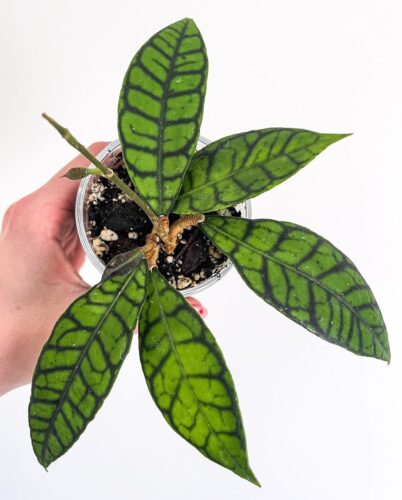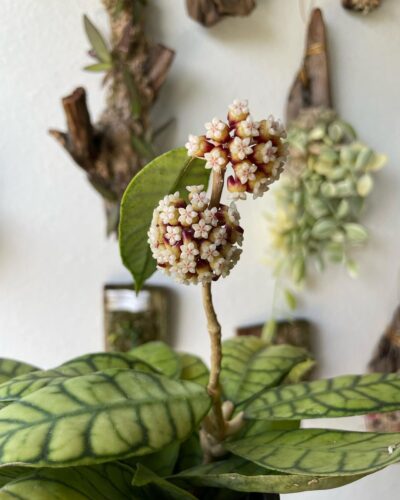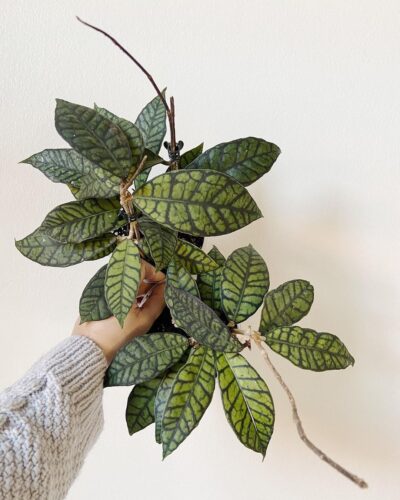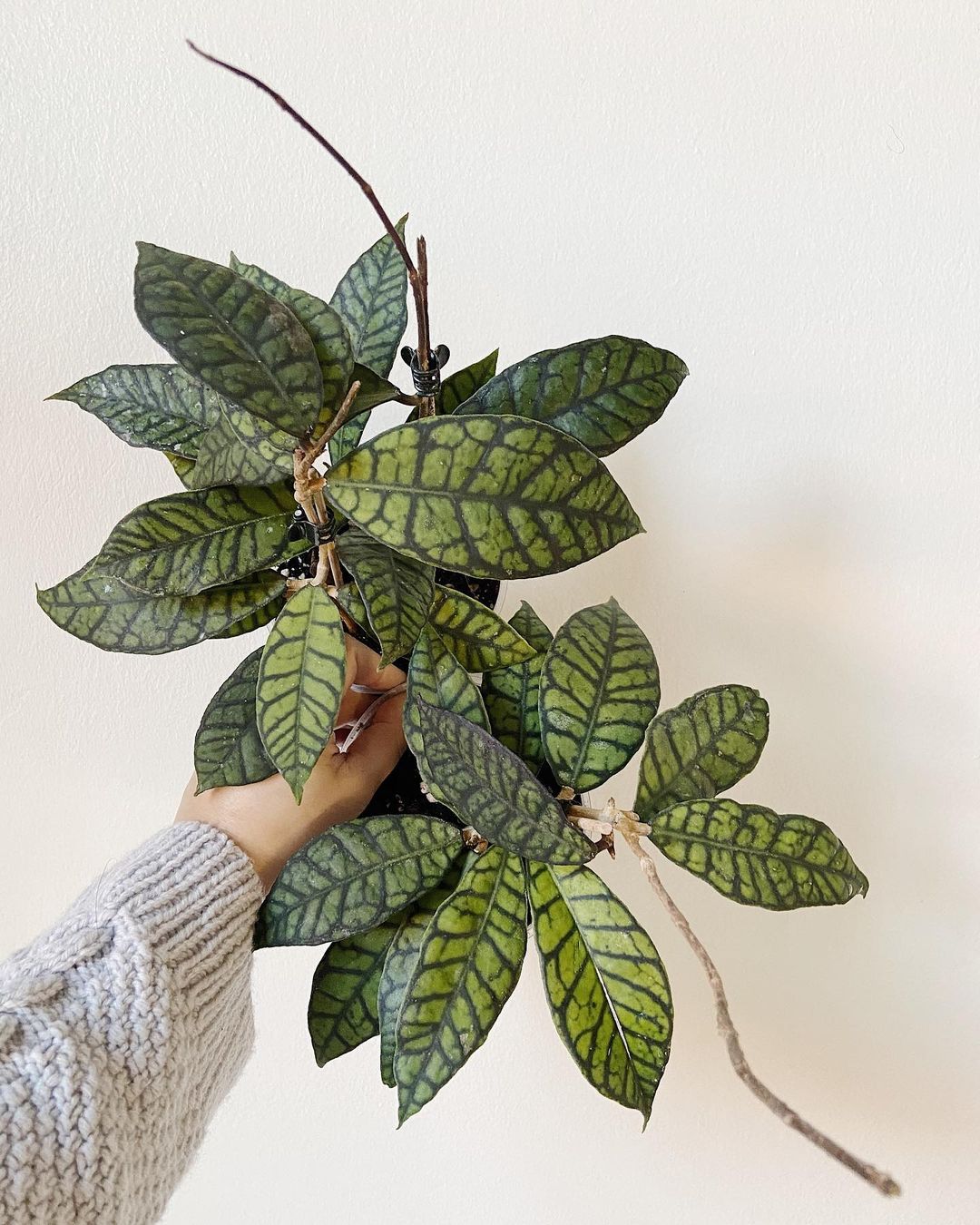Grow Hoya Callistophylla in your home for a beautiful display of gorgeous foliage and blooms. The best thing is that it has low needs.
If you are looking for a beautiful plant with trailing vines, attractive leaves, and sweet-smelling blooms, then Hoya Callistophylla is an ideal option to end your search. Read what it requires to flourish in your home in this care guide.
USDA Zones: 10-11
Read: Hoya Rangsan Growing and Care Guide
Hoya Callistophylla Information

Native to Borneo, Hoya Callistophylla belongs to the Apocynaceae family. This evergreen perennial plant has long vines; the tendrils can grow up to 6-12 feet long. It produces large light green leathery leaves up to 9 inches long with deep green veins.
Hoya Callistophylla offers clusters of small red-yellow blooms on a white surface; these flowers emit a mild fragrance. These pretty blossoms appear in 2-3 years after planting and need proper care.
Read: How to Grow Hoya Polyneura
How to Propagate Hoya Callistophylla
- You can propagate Hoya callistophylla with a healthy 4-6 inches of stem cutting and put it in a jar filled with non-chlorinated water.
- When roots appear, transplant it to a pot filled with well-draining soil.
- Keep the pot where it gets bright, indirect light.
Best Pot for Growing Hoya Callistophylla
Hoya plants don’t have a deep root system, so you can use shallow containers for growing this plant. Make sure the pot has sufficient drainage holes.
Read: Growing and Caring Hoya Caudata Sumatra
Ideal Growing Conditions for Hoya Callistophylla

Light
This plant favors bright, indirect light for upto 6-8 hours daily. In the absence of sufficient light, hoya becomes leggy. Also, avoid keeping the plant in direct sunlight.
If your home doesn’t have access to indirect sunlight, get help from artificial lights.
Soil
Use nutrient-rich cacti or succulent mix for growing hoya. However, you can add pumice, perlite, and ceramic balls to improve drainage.
Water
Water Hoya Callistophylla: when the top 1-2 inches of soil become dry, you can check the moisture in the soil by inserting your index finger in the soil. Remember that in winter, this plant turns dormant and does not require frequent watering.
Always water the plant thoroughly until it starts to come out from the drainage holes. Water the plant according to the climate almost once a week or when the soil is dry to the touch.
Temperature and Humidity
This tropical plant appreciates humidity and warmth. The ideal temperature range has to be 60-85 F, with the humidity levels up to 40-60 percent. To raise the humidity around the plant, mist it regularly.
Remember that sudden temperature drops below 50 F will affect your hoya plant. Also, extended exposure can impact the growth and damage the plant. Hence, do not keep the plant outdoors in cold climates for a long duration.
Read: Hoya Imperialis Care
Hoya Callistophylla Care

Fertilizer
Feed your Hoya Callistophylla with diluted to half-strength water-soluble slow-release fertilizer In an NPK ratio of 2:1:2. A dose high in nitrogen and potassium will be good for foliage and flower growth during the growing season.
Pruning
Prune your hoya vines during early spring before flower buds develop. You don’t need to remove the flower stalk of the previous year as hoya rebloom on the same stem every year. Remove the yellow and dead leaves regularly.
Repotting
This slow-growing plant does not need frequent repotting. You can repot it in 2-3 years or when it outgrows the current pot. Use a pot a few inches larger in diameter for transplanting.
Pests and Diseases
This hardy plant can attacked by mealybugs, aphids, Botrytis Blight, and Sooty mold. You can deter these pests by using a water spray, insecticidal soap, or neem oil.
Botrytis blight harms buds, blooms, and leaves of your hoya. Treat this issue by using fungicides and practicing good hygiene. Also, avoid over-fertilization and overcrowding.
Sooty mold can be identified when black molds appear on the leaves of the plant. You can get rid of this issue by misting the plant with an antibacterial spray or wiping the foliage with a cloth soaked in antibacterial liquid.
Toxicity
Keep this plant out of reach from kids and pets, as Hoya callistophylla is toxic for them.



